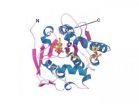(Press-News.org) Among hospitalized adult smokers who wanted to quit, a postdischarge intervention that included automated telephone calls and free medication resulted in higher sustained smoking cessation rates at six months than standard postdischarge advice to use smoking cessation medication and counseling, according to a study in the August 20 issue of JAMA.
Cigarette smoking is the leading preventable cause of death in the United States. For the nearly 4 million smokers hospitalized each year, a hospital stay offers a good opportunity to quit smoking because all hospitals are now smoke-free, requiring patients to abstain temporarily from tobacco use. The major challenge for hospitals in providing evidencebased care is identifying how to sustain tobacco treatment after discharge, according to background information in the article.
Nancy A. Rigotti, M.D., of Massachusetts General Hospital, Boston, and colleagues randomly assigned 397 hospitalized daily smokers (average age, 53 years) who wanted to quit smoking after discharge to sustained or standard tobacco treatment care. Sustained care participants (n = 198) received automated interactive voice response telephone calls and their choice of free smoking cessation medication (any type approved by the U.S. Food and Drug Administration) for up to 90 days. The automated telephone calls promoted cessation, provided medication management, and triaged smokers for additional counseling. Standard care participants (n = 199) received recommendations for postdischarge pharmacotherapy and counseling.
The researchers found that more participants in the sustained care group than in the standard care group achieved the primary outcome of biochemically confirmed past 7-day tobacco abstinence (using saliva samples to measure a nicotine metabolite) at 6-month follow-up (26 percent vs 15 percent, respectively). Sustained care also resulted in higher self-reported continuous abstinence rates for 6 months after discharge (27 percent vs 16 percent for standard care).
"[This] trial demonstrated the effectiveness of a program to promote long-term tobacco cessation among hospitalized cigarette smokers who received an inpatient tobacco dependence intervention and expressed an interest in cessation treatment after discharge. The intervention aimed to sustain the tobacco cessation treatment that had begun in the hospital. It succeeded in improving the use of both counseling and pharmacotherapy by smokers after discharge, and it increased by 71 percent the proportion of patients with biochemically confirmed tobacco abstinence 6 months after discharge, which is a standard measure of long-term smoking cessation. The intervention appeared to be effective across abroad range of smokers and provided high-value care at a relatively low cost," the authors write.
INFORMATION:
"These findings, if replicated, suggest a translatable, low-cost approach to achieving sustained smoking cessation after a hospital stay."
(doi:10.1001/jama.2014.9237; Available pre-embargo to the media at http://media.jamanetwork.com)
Editor's Note: Please see the article for additional information, including other authors, author contributions and affiliations, financial disclosures, funding and support, etc.
For related articles on this subject, please see our tobacco control theme issue from earlier this year, available at this link.
Intervention helps smokers quit following hospital stay
2014-08-19
ELSE PRESS RELEASES FROM THIS DATE:
Over-reliance of pulse oximetry for children with respiratory infection
2014-08-19
Among infants presenting to a pediatric emergency department with mild to moderate bronchiolitis, those with an artificially elevated oxygen saturation reading were less likely to be hospitalized or receive hospital care for more than 6 hours than those with unaltered readings, suggesting that these readings should not be the only factor in the decision to admit or discharge, according to a study in the August 20 issue of JAMA.
Bronchiolitis, a viral lower respiratory tract infection, is the leading cause of infant hospitalizations in the United States, with annual costs ...
Study examines incidence, survival rate of severe immunodeficiency disorder in newborns
2014-08-19
Newborn screening performed in numerous states indicates that the incidence of the potentially life-threatening disorder, severe combined immunodeficiency, is higher than previously believed, at 1 in 58,000 births, although there is a high rate of survival, according to a study in the August 20 issue of JAMA.
The purpose of newborn screening is early detection of inborn conditions for which prompt treatments can reduce the risk of death or irreversible damage. The first heritable immune disorders to which newborn screening has been applied are those that together comprise ...
Prevalence of HSV type 2 decreases among pregnant women in the Pacific Northwest
2014-08-19
In a study that included approximately 15,000 pregnant women, seroprevalence of herpes simplex virus (HSV) type 2 decreased substantially between 1989 and 2010 while there was no overall decrease for HSV type 1, but a slight increase among black women, according to a study in the August 20 issue of JAMA.
Shani Delaney, M.D., and Anna Wald, M.D., M.P.H., of the University of Washington, Seattle, and colleagues examined trends in the seroprevalence of HSV-1 and HSV-2 among pregnant women who delivered newborns at the University of Washington Medical Center between January ...
UCSF-led study finds SCID previously underdiagnosed in infants with fatal infections
2014-08-19
Severe combined immunodeficiency (SCID), a potentially life-threatening, but treatable, disorder affecting infants, is twice as common as previously believed, according to a new study that is the first to examine the national impact of this newborn screening test.
The study is the first combined analysis of more than 3 million infants screened for SCID in 10 states and the Navajo Nation. Infants from participating programs born from the start of the first pilot program in January 2008 through July 2013 were included.
In May, 2010, SCID was the 29th condition added ...
In-utero methadone, Subutex exposure could alter gene expression, cause severe Neonatal Abstience Syndrome
2014-08-19
(Boston) – Some infants born with neonatal abstinence syndrome (NAS) secondary to in-utero opioid exposure have a more difficult time going through withdrawal than others, but the underlying reasons are not well understood. While genetic and epigenetic (when genes are turned on or off) changes have recently been identified as potential factors, researchers at Boston University School of Medicine (BUSM) and Boston Medical Center (BMC) conducted a first of its kind study to identify some of these epigenetic changes that may influence symptom severity.
The researchers focused ...
Novel oral anticoagulant prescriptions soar, but at a high cost
2014-08-19
Philadelphia, PA, August 19, 2014 – Warfarin, the longtime standard treatment for atrial fibrillation, is facing competition from new options in the anticoagulant drug marketplace including dabigatran, rivaroxaban, and apixaban. A new study documents the rapid adoption of these novel oral anticoagulants (NOACs) into clinical practice. By mid-2013 NOACs accounted for 62% of all new anticoagulant prescriptions yet this represents 98% of total anticoagulant-related drug costs. Findings are published in The American Journal of Medicine.
Atrial fibrillation (AF) is a serious ...
Markey researchers develop web-based app to predict glioma mutations
2014-08-19
new web-based program developed by University of Kentucky Markey Cancer Center researchers will provide a simple, free way for healthcare providers to determine which brain tumor cases require testing for a genetic mutation.
Gliomas – a type of tumor that begins in the brain or spine – are the most common and deadly form of brain cancer in adults, making up about 80 percent of malignant brain cancer cases. In some of these cases, patients have a mutation in a specific gene, known as an IDH1 mutation – and patients who have this tend to survive years longer than those ...
Philippine tarsier gets boost from Kansas research, and genetic proof of a new variety
2014-08-19
LAWRENCE — It's not a monkey. It's not a lemur. It's not an African Bush Baby or even a Madagascan Mouse. Meet the Philippine tarsier: a tiny, adorable and downright "cool" primate from Southeast Asia.
"It's really not like any animals that Americans are familiar with," said Rafe Brown, curator-in-charge at the University of Kansas' Biodiversity Institute. "A tarsier has giant eyes and ears; an extremely cute, furry body; a long tail with a furry tuft at the end; and interesting expanded fingers and toe tips that look a bit like the disks on the digits of tree frogs."
Brown ...
New vaccine shows promise as stronger weapon against both tuberculosis and leprosy
2014-08-19
In many parts of the world, leprosy and tuberculosis live side-by-side. Worldwide there are approximately 233,000 new cases of leprosy per year, with nearly all of them occurring where tuberculosis is endemic.
The currently available century-old vaccine Bacille Calmette-Guerin, or BCG, provides only partial protection against both tuberculosis and leprosy, so a more potent vaccine is needed to combat both diseases. UCLA-led research may have found a stronger weapon against both diseases.
In a study published in the September issue of the peer-reviewed journal Infection ...
Seafood substitutions can expose consumers to unexpectedly high mercury
2014-08-19
New measurements from fish purchased at retail seafood counters in 10 different states show the extent to which mislabeling can expose consumers to unexpectedly high levels of mercury, a harmful pollutant.
Fishery stock "substitutions"—which falsely present a fish of the same species, but from a different geographic origin—are the most dangerous mislabeling offense, according to new research by University of Hawai'i at Mānoa scientists.
"Accurate labeling of seafood is essential to allow consumers to choose sustainable fisheries," said UH Mānoa biologist Peter ...


